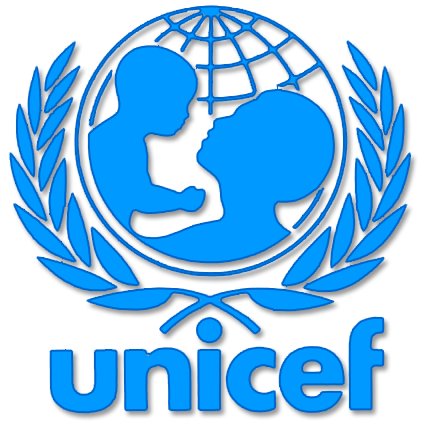
Abdul-Mugis Isahahaku, a two-year-old boy at Yapalisi Fong, a suburb of Karaga in the Northern Region, was born without any complications in 2022.
However, the baby’s health started deteriorating when he turned exactly a year old.
With each passing day, his tiny limbs became weak and the eyes too tired to stay open for long. For some members of the community, Issahaku’s condition was not a medical issue but a spiritual one.
The family endured the daily stigmatisation as they continued to move from one health facility to the other in search of help.
The baby’s weight was 5.0 kg and a mid-up arm circumference (MUAC) measuring 10.5cm – an indication that the child was suffering from acute malnutrition.
However, a glimmer of hope emerged when Salimu Issahaku, mother of the baby, rushed him to the Karaga Health Centre. After thorough examination by the health workers, he was immediately admitted and treated.
Sharing her experience with the Daily Graphic, the mother of four said: “My son was just 12 months old when he became weak and stopped eating, his weight dropped drastically and he would cry in pain every night. I was so afraid that I would lose him.”
At the facility, she said the baby was put on plumpy nuts, a ready-to-use therapeutic food (RUTF), adding that within few weeks his condition improved and he regained his weight and strength.
Currently, his weight has improved drastically to 7.8 kg and he has a MUAC of 12.5cm.
Just like little Issahuku, Sumaila Sudait, a 14-month-old baby who was also severely malnourished, went through a similar ordeal.
Aminatu Sumaila, his mother, recounts her own experience: “When my son became sick, I rushed him to the Karaga health facility and I was told he was severely malnourished. He was treated and now he is gradually regaining his weight.”
UNICEF’s intervention
Little Issahaku, Sudait and many other children under six years suffering from acute malnutrition are beneficiaries of the Community-Based Management of Acute Malnutrition (CMAM) programme being implemented by UNICEF, World Food Programme (WFP) and other partners with funding support from the French Government.
Implemented in the district since 2010, the project seeks to prevent acute malnutrition among children while improving nutrition and livelihood support for vulnerable groups such as children, pregnant and breastfeeding women.
The project has trained health staff and community health volunteers on the screening and referral of children with severe acute malnutrition (SAM), as well as community mobilisation and case searches.
Malnutrition
For the past years, the Karaga District has been facing acute malnutrition and food insecurity challenges.
Many mothers have lived with the constant fear of losing their children to hunger, illness and malnutrition.
With 78 per cent food insecurity and stunting levels at 22 per cent, malnutrition remains a critical issue among pregnant women and children.
For instance, the Karaga Health Centre has recorded 240 stunted growth cases in the past two years, out of which 141 cases have been fully treated and discharged, while 92 are active cases.
In an interview with the Daily Graphic, a Senior Public Health Nurse at the Karaga Health Centre, Joseph Nakoja Banyala, said malnutrition were the major cases recorded in the facility over the years.
“Through the support of UNICEF and its partners, we are able to visit various homes to identify SAM cases, admit and treat them. We feed them with plumpy nuts and also teach them how to use local foods such as soya, dawadawa and vegetables to improve their children’s nutrition,” he explained.
The Northern Regional Coordinator of CHPS, Benedict Ofori Appiah, indicated that the programme reached out to about 9,073 community members with key messages on nutrition, anaemia prevention and proper infant feeding.
He added that about 7,347 children under two had also been introduced to the Micronutrient Powder supplementation, which contributed to the reduction of under two malnutrition by 15 per cent.
“A cure rate of 96 per cent was achieved in 2023 as compared to 64 per cent in 2022, defaulter rate moved from six per cent to zero per cent, while death rate also moved from 12 per cent to zero per cent in 2022 and 2023 respectively.
“The active search for severe acute malnutrition cases led to better registration and management of malnourished children, the district successfully identified 541 cases out of the 591 cases,” he pointed out.
Infant nutrition
Beyond that, Mr Appiah indicated that 100 per cent of children above six months were introduced to family foods under the Community Infant and Young Child Feeding (C-IYCF) component of the project.
That, he said, had contributed to significantly reduce the malnutrition rate among children under five by 2.3 per cent in the district.
“Iron-folic acid (IFA) supplementation increased from 2022 to 2023, with 3,734 pregnant women receiving the supplement at least three times in 2023.
The IFA supplementation for adolescent girls also increased, with 18,151 girls receiving IFA in 2023, compared to 13,350 in 2022, thanks to the intervention,” he added.
While commending UNICEF and its partners for the intervention, he appealed for the regular supply of key nutrition commodities, medical equipment and improved integration of nutrition programmes with broader development initiatives.
The Health and Nutrition Officer at UNICEF, Tamale Field office, Porbilla Ofosu Apea, indicated that the treatment of malnutrition-related cases had been brought closer to the people, with over 4,000 health facilities currently implementing the intervention.
She said the project had trained a number of health staff on community-based management of acute malnutrition (CMAM-OPC) and community-based management of acute malnutrition (CMAM-IPC).
Additionally, community health volunteers have been trained on screening and referral of children with severe acute malnutrition and follow-up to active cases.
Source: graphic.com.gh







